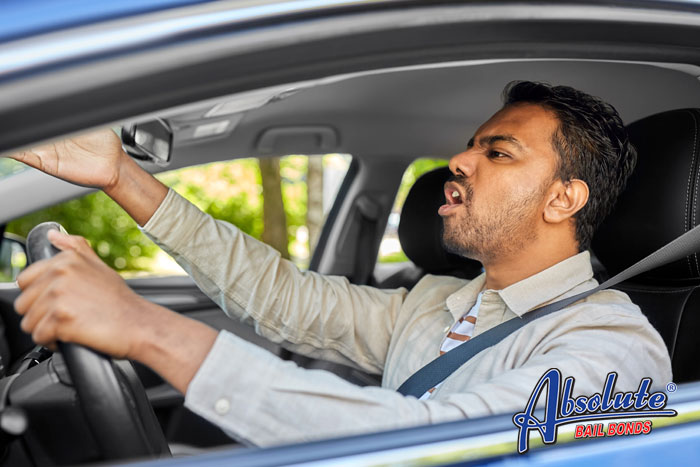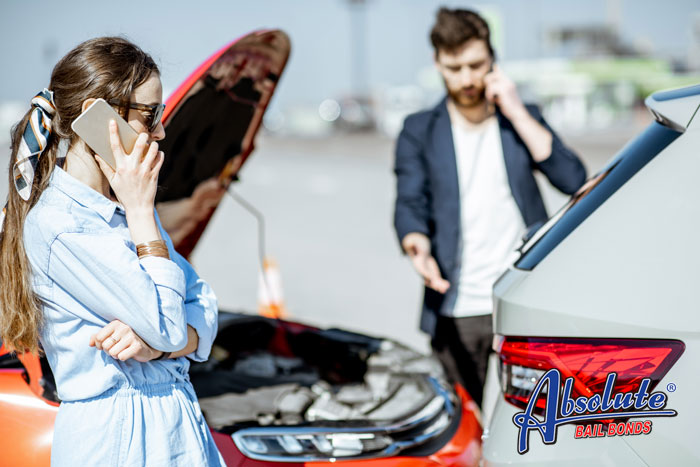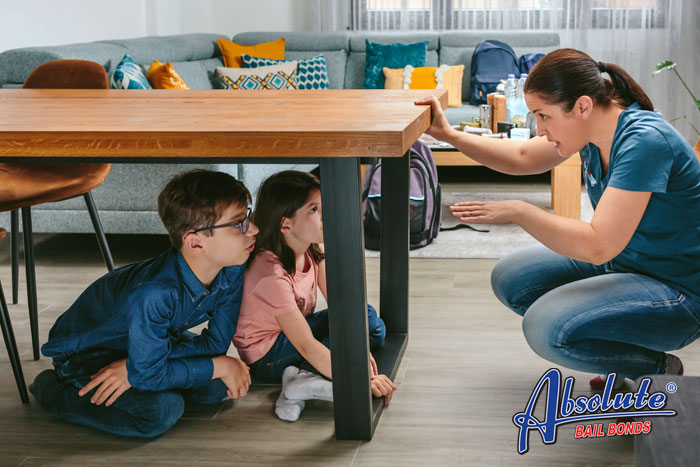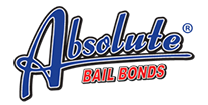
Avoiding Road Rage in California
Road rage is a serious problem and it doesn’t show signs of getting better. According to the American Automobile Association, approximately 200 murders and 12,000 deaths over seven years were linked to road rage incidents. The NHTSA reported that 66% of traffic fatalities were the direct result of aggressive driving and road rage. The Zebra conducted a study in 2019 that revealed that 82% of drivers committed an act of road rage.
While you may not be able to avoid road rage altogether, there are some things you can do to reduce the number of road rage incidents you’re linked to.
Avoid driving when you’re already on edge.
The more irritated you are when you slide behind the wheel, the greater the odds are that you’ll experience road rage during your commute. Try to calm yourself down before driving. Once you’re on the road, take deep breaths and listen to soothing music or an uplifting podcast.
Give yourself plenty of time to reach your destination. The tighter you are on time, the more recklessly you’ll drive and the more irritated you’ll be at other drivers. Giving yourself a good amount of time to safely reach your destination is one of the best ways to avoid road rage incidents.
Carefully choose your route before you leave. If you know you’re already irritated, choose a route that has the least amount of traffic on it. The fewer cars you encounter on your drive, the more relaxed you’ll be.
Let things go while you’re driving. There will be days when things happen that irritate you. Rather than letting them get under your skin and prompt you into doing something you’ll regret. Take lots of deep breaths, practice defensive driving techniques, and focus on all the good things that are happening around you.
When you encounter an angry driver, don’t engage with them. Stay defensive and let them go ahead of you. Don’t match their aggressive behavior with aggressive moves of your own.

Providing False Credit Card Information
There are times when we could all use a little extra money. Adding an additional line of credit to our lives seems like a good way to get it. The problem is that if you’re already overstretched, the credit card companies will likely reject your application. This can prompt some of us to consider providing false credit card information.
Before you start to provide someone with false credit card information you should know about Penal Code 484f PC. This is the law that outlines the consequences of providing false credit card information in California.
The law states: “(a) Every person who, with the intent to defraud, designs, makes, alters, or embosses a counterfeit access card or utters or otherwise attempts to use a counterfeit access card is guilty of forgery.
(b) A person other than the cardholder or a person authorized by him or her who, with the intent to defraud, signs the name of another or of a fictitious person to an access card, sales slip, sales draft, or instrument for the payment of money which evidences an access card transaction, is guilty of forgery.”
If you think providing false credit card information is something that only happens when people lie on credit card applications, you’re wrong. While there are lots of people who do lie when they apply for credit cards, there are many different ways a person can violate the law.
Examples of providing false credit card information include:
- Creating fake debit/credit cards
- Using a friend/family member’s credit card without first getting their permission
- Providing a store with a fake credit card number
- Doing something to alter the numbers on a credit/debit card
Providing false credit card information is a wobbler offense. The circumstances surrounding the incident and the amount of money involved are used to determine if you’ll be charged with a misdemeanor or a felony. If you’re convicted of misdemeanor falsifying credit card information, the maximum sentence is one year in jail and restitution. In felony cases, the maximum sentence is three years in prison.
In most cases, providing false credit card information is just one of the charges you’ll have hanging over your head. Additional charges usually connected to this type of crime usually include forgery, petty theft, stealing a credit card, etc.

Penalties for Illegal Street Racing in California
Yes, the Fast and the Furious movie franchise made street racing look like a great way of generating some excitement on a Friday night, but before you gather a group of your friend together to see who can drive the fastest, you should know that street racing, drag racing, and other vehicular speed contests aren’t legal on California’s public roads. They violate not one, but two of California’s laws: Vehicle Code 23103 VC (reckless driving) and Vehicle Code 23109 VC (speed contests).
You must understand violating either of these California laws by speed racing on one of California’s public roads won’t result in a simple ticket. In most cases, you’ll find yourself facing misdemeanor charges. If you’re convicted, you’ll go through life with a criminal record and have to pay some extremely hefty fines. You may even spend some time inside a county jail cell.
In order to secure a guilty conviction in a California street racing case, the prosecution must be able to prove that in addition to actually driving the car, you were also aware that you were street racing. You can’t be convicted of street racing if you simply happened to be in the wrong place at the wrong time and got swept up in a street racing sting.
You can be charged with street racing if you and another driver challenge one another to a race while sitting at a stoplight. In California, it only takes two people to create an illegal street racing situation.
The first time you’re convicted of participating in a speed contest in California, your sentence can include:
- A fine of up to $1,000
- Spending as much as 90 days in jail
If you’re convicted of speed racing a second time, you will lose your driving privileges. The second (and following times) you’re convicted of speed racing in California, you’re sentence could include:
- Mandatory six months of revoked driving privileges
- A fine that could be as much as $1,000
- A potential six months in jail
While you’re not legally allowed to engage in any type of speed contest while operating a vehicle on one of California’s public roads, you’re free to do what you like while on private property, including private roads. While the police won’t stop you from street racing on a private road, you still want to be careful. If someone is hurt because of your actions while you’re behind the wheel, it’s possible you’ll be named in a civil case.

Does Bail Need to be Posted Right Away?
You’ve just gotten a call from a loved one. They’ve been arrested. They’re scared. They know how much bail is needed but they don’t have the funds available. You’ve agreed to help but aren’t sure how much time you have to act.
The first thing you need to do is stop and take a deep breath. You’ve got this!
Yes, your loved one wants to be released from jail as quickly as possible but that doesn’t mean you can’t take a little time and think about the situation. The good news is that you’re loved one’s bail doesn’t have to be posted right away. Yes, they may have to spend a few more hours or days in jail, but they’ll be fine. Bail doesn’t have a time frame. It can be posted right away or six months after you’re loved one was arrested. You’re free to take as much time as you need to decide how you want to handle the situation. You deserve to take your time and approach this project with a clear head.
The first thing you want to do is decide how you want to cover your loved one’s bail. Do you have enough money to cover the bail yourself or do you need the help of a California bail bonds agency? If you decide you need an agency, you’ll want to give yourself enough time to research all the local ones so that you can choose the one that’s the most reputable.
Once you’ve selected a bail bonds agency you want to work with, you must learn what kind of things you need to secure a bail bond. Find out if you’ll need a co-signer if you have to use anything as collateral, what your responsibilities are as the signer of the bail bond, and if you qualify for any discounts or payment programs. Make sure you ask lots of questions during your initial consultation with the agency.
Before you sign with a bail bonds agency, you need to have a serious conversation with your loved one. This conversation is to make sure you’re both going into this process with your eyes wide open. Make sure you discuss who is paying the 10% fee the bail bond agency requires, what is at stake if they fail to attend their court dates, what rules they have to follow while their out on bail, and what you expect them to do after they’re released from jail.
This is one of those situations where everyone must be on the same page.
If you or a loved one finds themselves in need of a California bail bond, it’s in your best interest to contact Absolute Bail Bonds in San Bernardino. We have a long history of helping people just like you. We offer free consultation, flexible payment plans, easy-to-understand contracts, and 24/7 service.
Feel free to call or click the Chat Now link for a free consultation.

Do I Have to Report a Traffic Accident?
Most of us have a weird, knee-jerk reaction to traffic accidents. We like to pretend we don’t know about them and try to put as much distance between ourselves and the traffic accident as we possibly can. This is our reaction whether we’re involved in the accident or if we’ve simply witnessed one.
When a traffic accident occurs, many of us wonder if we actually have to report it to the police.
If you’re driving any of the vehicles involved in a car accident, you are legally required to report the accident to the police.
Technically, you have 24 hours to complete a written report about the incident. All things considered, it’s in your best interest to report the accident as soon as it happens. There are several reasons for this:
- The responding officer will handle writing the written report for you
- Filing the insurance claim will be easier
- The events leading up to the cause of the accident is fresh in everyone’s mind
- You won’t have to worry about being labeled a hit and run driver
In addition to letting the police know about the accident, you need to let your car insurance company know about the accident as quickly as possible. Not only will this put you in a position to receive your claim money as quickly as possible, but if an investigation is needed, they will be able to talk to everyone involved while the details of the accident remain fresh in everyone’s mind.
But what if you merely witnessed a car accident but weren’t directly involved with it?
It’s in your best interest to make sure that everyone who was involved in the accident doesn’t need any type of medical attention and you should also plan on serving as a witness to the incident.

The Unlawful Taking of Pictures and Video Recording
Thanks to built-in cameras on smartphones, most of us have a camera at our disposal 24/7. We’re able to record everything. We use the phone camera for selfies, points of interest, and to record the actions of others. We’ve grown so accustomed to taking photos and videos of everything that we rarely stop and think about the fact that there are certain times, places, and situations when taking pictures and video recordings is actually against the law.
Learning that there are cases where a person has broken the law with videos or photos they’ve snapped can make you have second thoughts about using your camera. The good news is that the odds are pretty good that you’re not going to record anything that will break the law. Both federal and state laws are written in a manner that allows you to legally take a photo of anything that’s plainly visible. You’ll be pleased to learn that this includes federal buildings and even police officers who are working.
You’re also legally allowed to take photos and videos of things that can be seen from public property. For example, as long as you can do so from the road, you’re allowed to photograph an interesting-looking barn.
If you’re on private property, the property owners get to make rules about what you can and can’t take photos/videos of. For example, if snapping a few shots of the barn requires you to walk across a private hayfield and jumping a fence, the property owners could insist that you destroy the images and also file trespassing charges against you. The same is true if you walk up to someone’s house and start snapping pictures or videos through their windows. You’re not legally allowed to take photos or videos of a person (or their belongings) if the property owner had a reasonable expectation of privacy.
If you’re caught taking photos or videos in an area where the property owner had a reasonable expectation of privacy, they can file invasion of privacy charges as well as trespassing charges against you. If you’re convicted of invasion of privacy, the judge could sentence you to up to six months in a county jail and order you to pay a fine of $1,000. If this isn’t the first time you’ve been convicted of invasion of privacy, the sentence could double.
The best way to avoid getting into trouble while you shooting pictures or videos is to make sure you’re feet are always firmly planted on public property.

Probation and Parole. What’s the Difference?
If you’re confused about the difference between probation and parole, you’re not alone. Most people don’t really know what the difference is between the two until they get into trouble with the law.
While you’re on probation, you’re still technically in police custody, but you have a great deal more freedom than you’d enjoy if you were in jail. There will be some rules attached to your probation, breaking any of these rules will result in you losing your probation status and being locked in a cell. One of the big things you’ll have to do is routinely meet with your probation officer who will insist that you prove you’re following the rules.
Many people are put on probation without ever seeing the inside of a jail cell.
Parole is both similar to probation and different. The best way to think about parole is that it is kind of like is a kind of parental supervision. It’s sort of like that stage where sorta living on your own but still relying on your parents. When you’re granted parole, the parole board is saying that while you no longer have to be in jail, you’re also not ready for total independence.
Legally speaking, parole is a conditional release from prison. It is a way of getting out of prison even though you still have some time left to serve. Other than the fact that you have spent time in prison, parole and probation are very similar. Though the rules of parole are sometimes stricter and you sometimes have to work harder to prove that you should be granted parole. One of the big issues connected to parole is admitting your guilt and showing that you understand why your actions were wrong.
It isn’t unusual for restrictions and requirements to be attached to both parole and probation, though those restrictions vary from one case to the next. In most cases, people who are serving both parole and probation will have their travel restricted, will have to submit to drug (and sometimes alcohol) testing, are sometimes required to attend counseling sessions, are sometimes required to be at home during specific times of the day/night, and will sometimes be electronically monitored.
If you are serving either probation or parole, it’s important to remember that you haven’t been given a get out of jail free card. A single misstep, even a little one, could result in your being incarcerated.

Earthquake Safety Tips
There are many great reasons to live in California. There’s also one huge drawback. In exchange for easy access to beaches and year-round wonderful weather, you always have to be prepared for an earthquake.
The good news is that most of the earthquakes we experiences are really small, little more than slight tremors that give people something to chat about. They seldom do more than cause a few things to fall off shelves. However, every once in a while, there is a massive earthquake.
Since no one really knows when a big earthquake will arrive or how bad the earthquake will be, it’s important that everyone is up to date on current earthquake safety tips.
Create a Safety Plan
Everyone who lives in your home should have a plan about how they will handle things if they’re home during a massive earthquake. Not only does this mean knowing the safest point in your house, but also having a system in place that allows you to connect with loved ones to let them know that you’re safe. Keep some survival supplies, including non-perishables, blankets, and bottled water in the earthquake designation zones.
When You’re Indoors
If you’re inside when a massive earthquake hits get somewhere protected. Ideally, this would be a closet, which has a frame that provides additional protection. If you’re not near a closet, get under a table or desk. The idea is to get some protection from falling debris. Make sure you’re well away from bookcases, windows, and anything heavy that could shift or fall.
Drop low to the ground, preferably on your knees, and stay still until the shaking stops. You should stay indoors for several minutes after the shaking stops. The only exception to staying in place is if you smell gas or smoke. If you smell gas or smoke, get out as quickly as possible while yelling for help.
When You’re Outside
If you’re outside when an earthquake starts, you want to get low to the ground while also moving away from trees, buildings, and power lines. If you’re in a vehicle, stop the car somewhere that there’s little damage of it being hit by a powerline tree, or sliding into a ditch.
Once the earthquake has passed, you need to first take care of yourself and make sure you’re not injured. Once you’re confident you’re in good shape, your next course of action is checking in with your loved ones and helping anyone who was injured during the earthquake.

Driving Drunk on Halloween
We have a tendency of thinking about Halloween as a holiday that is full of good-natured fun. It’s a holiday that allows us to wear crazy costumes, abandon our diets, and really cut loose. The only real risk we usually associate with the holiday is the need to drive carefully during the time frame that trick-or-treaters roam the streets.
What many of us don’t know is that Halloween is a holiday when many drivers overindulge and are legally drunk when they slide behind the wheel. Most of these drunk drivers are leaving Halloween parties.
College students in particular are prone to over drinking on Halloween. One research project revealed that the average college student usually drinks about 6.3 alcoholic beverages at Halloween parties. That’s about 1.4 more drinks than they would normally consume.
And it isn’t just college kids who drink too much at Halloween functions. According to the American Addiction Centers, Halloween is the fourth booziest holiday of the year. Americans consume less alcohol on Halloween than they do on the Fourth of July but more than they drink during Cinco de Mayo.
If you’re going to a Halloween party and plan on drinking alcohol, you still need to be smart. Assume that you’ll drink too much to safely drive home and create a plan. This plan could involve a designated driver, getting an Uber home, or simply staying at the host’s home until you’ve sobered up.
Hawaii patrol officers know how dangerous the streets are on Halloween night. They will be out, and they will be keeping an eagle eye open for any tell-tale signs that you’re driving drunk. It’s even possible that you’ll encounter a sobriety checkpoint on your way home.
If you are arrested and convicted of drunk driving on Halloween, the consequences will have an immediate impact on your life.
If this is your first DUI conviction, you could be sentenced to as much as six months in jail, fined up to $1,000, have your driver’s license suspended for six months, and have a vehicle ignition lock installed on your vehicle for up to a year while your driving privileges are restricted.
The third time you’re convicted of drunk driving in California, you could be sentenced to 120 days through 1 year in jail, pay a fine of $1,800, lose your driver’s license for up to 3 years, plus have an ignition lock installed on your vehicle for as long as two years.
If your drunk driving results in property damage, someone getting hurt, or the death of another person, you will face even more serious charges that could include vehicular manslaughter.
All things considered, finding a different way to get home after you’ve been drinking at a Halloween party is a really good idea.

The Truth About Parking Lot Safety
We take parking lots for granted. We treat them like a casual place to leave our car while we run into a nearby building.
We’re usually so focused on either getting to the store/office/school/government building or getting into our vehicle to go home, that we seldom stop and think about how dangerous parking lots really are.
The truth is that every time you use a parking lot, you put your life at risk.
A surprising number of people are injured in parking lot falls every single year. In most cases the reason for the fall is innocent, you tripped on a stick, a pothole, or even your own feet. The problem with parking lot falls is that not only is there the danger that you’ll hit your head on the asphalt when you land and possibly sustain a traumatic brain injury, but while you’re down, there’s a chance a driver won’t notice you on the ground and will run over you.
The best way to avoid a dangerous fall is walking with care, staying well out of the routes the vehicles take through the parking lot, and not walking behind/in front of any running vehicle. If you do fall, yell at the top of your lungs so drivers will know you’re in distress and drive defensively and cautiously.
Drugs and other criminal activity are a huge problem in parking lots. There’s something about the layout of parking lots and the sheltered nature and accessibility of the parking garages attract a huge criminal element. This isn’t something you want to get mixed up in. Avoid groups of people who are simply standing around or who appear to be conducting business. Avoid making eye contact with these people. Once you’re in a safe place, contact the police.
Parking lot abductions are a serious problem, particularly for women and children. So many people are distracted by either plans or their cell phones that they are easy to grab and shove into a car. The best way to avoid being a parking lot abduction victim is to keep your head up, your ears free of any headphones so that you can hear an approaching car or footsteps, don’t walk in shadows, and enter your car as quickly as possible.
If you suspect you’re being stalked through the parking lot, abandon your plans to leave and go to the building and alert an employee to the situation.
The next time you’re in a parking lot, don’t take your safety for granted. Be aware of the potential danger and have a plan to stay safe and healthy.

